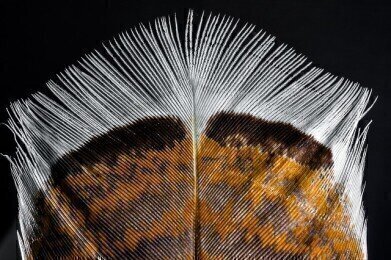Microscopy & Microtechniques
What's Inside Myanmar’s 99-Million-Year-Old Fossil?
Dec 15 2016
Known for its breath-taking Buddhist relics and stunning natural scenery, Myanmar isn’t usually thrown into the spotlight for its archaeological merit. Though following a historic discovery, the nation is now enjoying fame of Jurassic proportions.
Trawling through an amber market in the Southeast Asian nation, palaeontologists discovered the feathered tail of a 99-million-year-old dinosaur, encased in a tomb of fossilised tree resin dating back to the Cretaceous period. Measuring in at just 1.4-inches, experts theorise that the segment likely came from a sparrow sized coelurosaur, which resembles a miniature Tyrannosaurus rex.
On December 8, Current Biology published a fascinating write-up on the find, co-authored by Lida Xing of Beijing’s China University of Geosciences. Xing describes the amber as “an astonishing fossil,” and commends amber for its ability to preserve the finest details of feathers, in three-dimensional form.
New find confirms link between dinosaurs and birds
So what won the discovery global headlines? Primarily, it confirms the controversial theory that modern birds evolved from therapod dinosaurs.
Armed with a microscope, X-ray scanner and CT scanner, the researchers were able to identify eight vertebrae in the feathered tail, as well as traces of soft tissue and blood. Curving through the amber, the tailbone supports a full-bodied bush of long filaments that sprout across its length. These velcro-like hooks are called barbules, and are almost identical to the feather pigments that are present in modern birds. While the concept of feathered dinosaurs isn’t a new theory, this is the first study to decisively link the fundamental anatomy of a therapod to its feathers.
“We can tell that this specimen came from a theropod dinosaur because the tail is flexible and the vertebrae articulate with each other, instead of being fused together to form a solid rod,” commented co-author Ryan McKellar in a recent article published by The Washington Post.
While the feathered remains of the coelurosaur tail dominated headlines, it wasn’t the only thing immortalised in the golden chunk of amber. Inside the fossilised tree resin were also several ants, a beetle and remnants of foliage.
Palaeontologists crush dreams of flying dinos
Throw the words ‘dinosaurs’ and ‘feathers’ into the same sentence and it’s easy to conjure up images of flying monsters. To the dismay of dinosaur enthusiasts, the team quickly shut down this theory and confirmed that all the feathers lack a well-developed rachis. The absence of the narrow shaft that anchors most quills indicates that this dinosaur’s plumage was purely ornamental.
From palaeontology to medicine, scientific milestones are intrinsically linked to the development of next generation equipment. ‘Pioneering Centre for Nanoscale Materials Research Launched on Harwell Campus’ spotlights the recently opened electron Physical Sciences Imaging Centre (ePSIC), which houses two state-of-the-art electron microscopes designed to provide scientists with atomic level images of a range of technologically important materials.
Digital Edition
Lab Asia 31.2 April 2024
April 2024
In This Edition Chromatography Articles - Approaches to troubleshooting an SPE method for the analysis of oligonucleotides (pt i) - High-precision liquid flow processes demand full fluidic c...
View all digital editions
Events
Apr 22 2024 Marrakech, Morroco
Making Pharmaceuticals Exhibition & Conference
Apr 23 2024 Coventry, UK
Apr 23 2024 Kintex, South Korea
Apr 23 2024 Seoul, South Korea
Apr 24 2024 Jakarta, Indonesia




.jpg)













